
The Public Enemy is a 1931 American pre-Code gangster film produced and distributed by Warner Bros. The film was directed by William A. Wellman and stars James Cagney, Jean Harlow, Edward Woods, Donald Cook and Joan Blondell. The film relates the story of a young man's rise in the criminal underworld in Prohibition-era urban America. The supporting players include Beryl Mercer, Murray Kinnell, and Mae Clarke. The screenplay is based on an unpublished novel—Beer and Blood by two former newspapermen, John Bright and Kubec Glasmon—who had witnessed some of Al Capone's murderous gang rivalries in Chicago.

Angels with Dirty Faces is a 1938 American crime drama film directed by Michael Curtiz for Warner Brothers. It stars James Cagney, Pat O'Brien, The Dead End Kids, Humphrey Bogart, Ann Sheridan, and George Bancroft. The screenplay was written by John Wexley and Warren Duff based on the story by Rowland Brown. The film chronicles the relationship of the notorious gangster William "Rocky" Sullivan with his childhood friend and now-priest Father Jerry Connolly. After spending three years in prison for armed robbery, Rocky intends to collect $100,000 from his co-conspirator Jim Frazier, a mob lawyer. All the while, Father Connolly tries to prevent a group of youths from falling under Rocky's influence.

Mervyn LeRoy was an American film director, producer and actor. In his youth he played juvenile roles in vaudeville and silent film comedies.
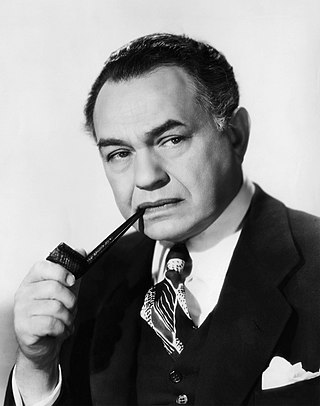
Edward G. Robinson was an American actor of stage and screen, who was popular during Hollywood's Golden Age. He appeared in 30 Broadway plays, and more than 100 films, during a 50-year career, and is best remembered for his tough-guy roles as gangsters in such films as Little Caesar and Key Largo. During his career, Robinson received the Cannes Film Festival Award for Best Actor for his performance in House of Strangers.

Robin and the 7 Hoods is a 1964 American musical film directed by Gordon Douglas and starring Frank Sinatra, Dean Martin, Sammy Davis Jr. and Bing Crosby. It features Peter Falk and Barbara Rush, with an uncredited cameo by Edward G. Robinson.

High Sierra is a 1941 American film noir directed by Raoul Walsh, written by William R. Burnett and John Huston from the novel by Burnett, and starring Ida Lupino and Humphrey Bogart. Its plot follows a career criminal who becomes involved in a jewel heist in a resort town in California's Sierra Nevada, along with a young former taxi dancer (Lupino).

New Jack City is a 1991 American crime action film based on an original story and written by Thomas Lee Wright and Barry Michael Cooper, and directed by Mario Van Peebles in his feature film directorial debut. The film stars Wesley Snipes, Ice-T, Allen Payne, Chris Rock, Judd Nelson, Bill Cobbs, and Van Peebles. Its plot follows Nino Brown, a drug lord in New York City during the crack epidemic, and Scotty Appleton, an NYPD detective who vows to end Nino's rise to power by going undercover to work for Nino's gang.

The Enforcer is a 1951 American film noir co-directed by Bretaigne Windust and an uncredited Raoul Walsh, who shot most of the film's suspenseful moments, including the ending. The production, largely a police procedural, stars Humphrey Bogart and is based on the Murder, Inc. trials. The supporting cast features Zero Mostel and Everett Sloane.

Johnny Dangerously is a 1984 American crime comedy film, and a parody of 1930s crime/gangster movies. It was directed by Amy Heckerling; two of its four screenwriters, Jeff Harris and Bernie Kukoff, had previously created the hit series Diff'rent Strokes.
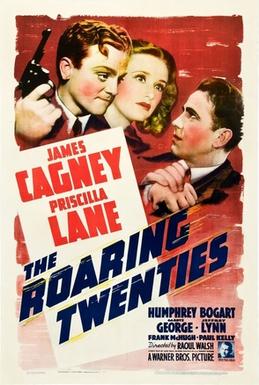
The Roaring Twenties is a 1939 American crime thriller film directed by Raoul Walsh and starring James Cagney, Priscilla Lane, Humphrey Bogart, and Gladys George. The film, spanning the period from 1919 to 1933, was written by Jerry Wald, Richard Macaulay and Robert Rossen. The film follows three men and their experiences during major events in the 1920s, such as Prohibition era violence and the 1929 stock market crash.

Three on a Match is a 1932 American pre-Code crime drama film released by Warner Bros. The film was directed by Mervyn LeRoy and stars Joan Blondell, Warren William, Ann Dvorak, and Bette Davis. The film also features Lyle Talbot, Humphrey Bogart, Allen Jenkins, and Edward Arnold.
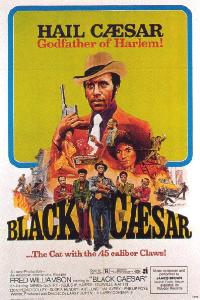
Black Caesar is a 1973 American blaxploitation crime drama film written and directed by Larry Cohen and starring Fred Williamson, Gloria Hendry and Julius Harris. It features a musical score by James Brown, his first experience with writing music for film. A sequel titled Hell Up in Harlem was released in late 1973.

The Amazing Dr. Clitterhouse is a 1938 American crime film directed by Anatole Litvak and starring Edward G. Robinson, Claire Trevor and Humphrey Bogart. It was distributed by Warner Bros. and written by John Wexley and John Huston, based on the 1936 play The Amazing Dr. Clitterhouse, the first play written by short-story writer Barré Lyndon, which ran for three months on Broadway with Cedric Hardwicke after playing in London.
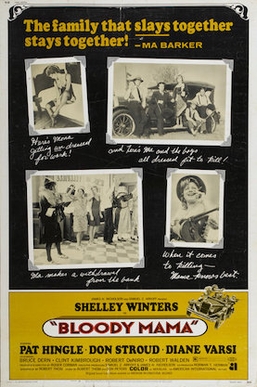
Bloody Mama is a 1970 American exploitation crime film directed by Roger Corman, and starring Shelley Winters in the title role, with Bruce Dern, Don Stroud, Robert Walden, Alex Nicol and Robert De Niro in supporting roles. It was very loosely based on the real story of Ma Barker, who is depicted as a corrupt, mentally-disturbed mother who encourages and organizes the criminality of her four adult sons in Depression-era southern United States.

The Bad Seed is a 1956 American psychological thriller film directed by Mervyn LeRoy and starring Nancy Kelly, Patty McCormack, Henry Jones and Eileen Heckart.
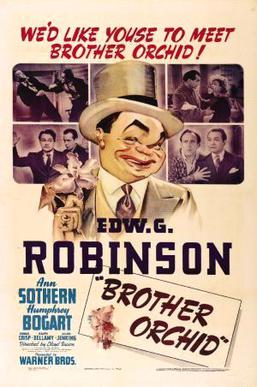
Brother Orchid is a 1940 American crime/comedy film directed by Lloyd Bacon and starring Edward G. Robinson, Ann Sothern and Humphrey Bogart, with featured performances by Donald Crisp, Ralph Bellamy and Allen Jenkins. The screenplay was written by Earl Baldwin, with uncredited contributions from Jerry Wald and Richard Macauley, based on a story by Richard Connell originally published in Collier's Magazine on May 21, 1938. Prior to the creation of the movie version of Connell's story, a stage adaptation was written by playwright/novelist Leo Brady. The script was originally produced at Catholic University of America in Washington, D.C..

White Heat is a 1949 American film noir directed by Raoul Walsh and starring James Cagney, Virginia Mayo and Edmond O'Brien.

The Whole Town's Talking is a 1935 American comedy film starring Edward G. Robinson as a law-abiding man who bears a striking resemblance to a killer, with Jean Arthur as his love interest. It was directed by John Ford from a screenplay by Jo Swerling and Robert Riskin based on a story by W.R. Burnett originally published in Collier's in August 1932. Burnett was also the author of the source material for Robinson's screen break-through, Little Caesar. The film The Whole Town's Talking (1926) has no story connection to this film.

The era of American film production from the early sound era to the enforcement of the Hays Code in 1934 is denoted as Pre-Code Hollywood. The era contained violence and crime in pictures which would not be seen again until decades later. Although the Hays office had specifically recommended removing profanity, the drug trade, and prostitution from pictures, it had never officially recommended against depictions of violence in any form in the 1920s. State censor boards, however, created their own guidelines, and New York in particular developed a list of violent material which had to be removed for a picture to be shown in the state. Two main types of crime films were released during the period: the gangster picture and the prison film.
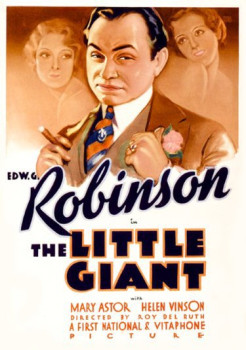
The Little Giant is a 1933 American pre-Code crime comedy romance. It follows the attempts of an ex-gangster to make his way into high society.




















